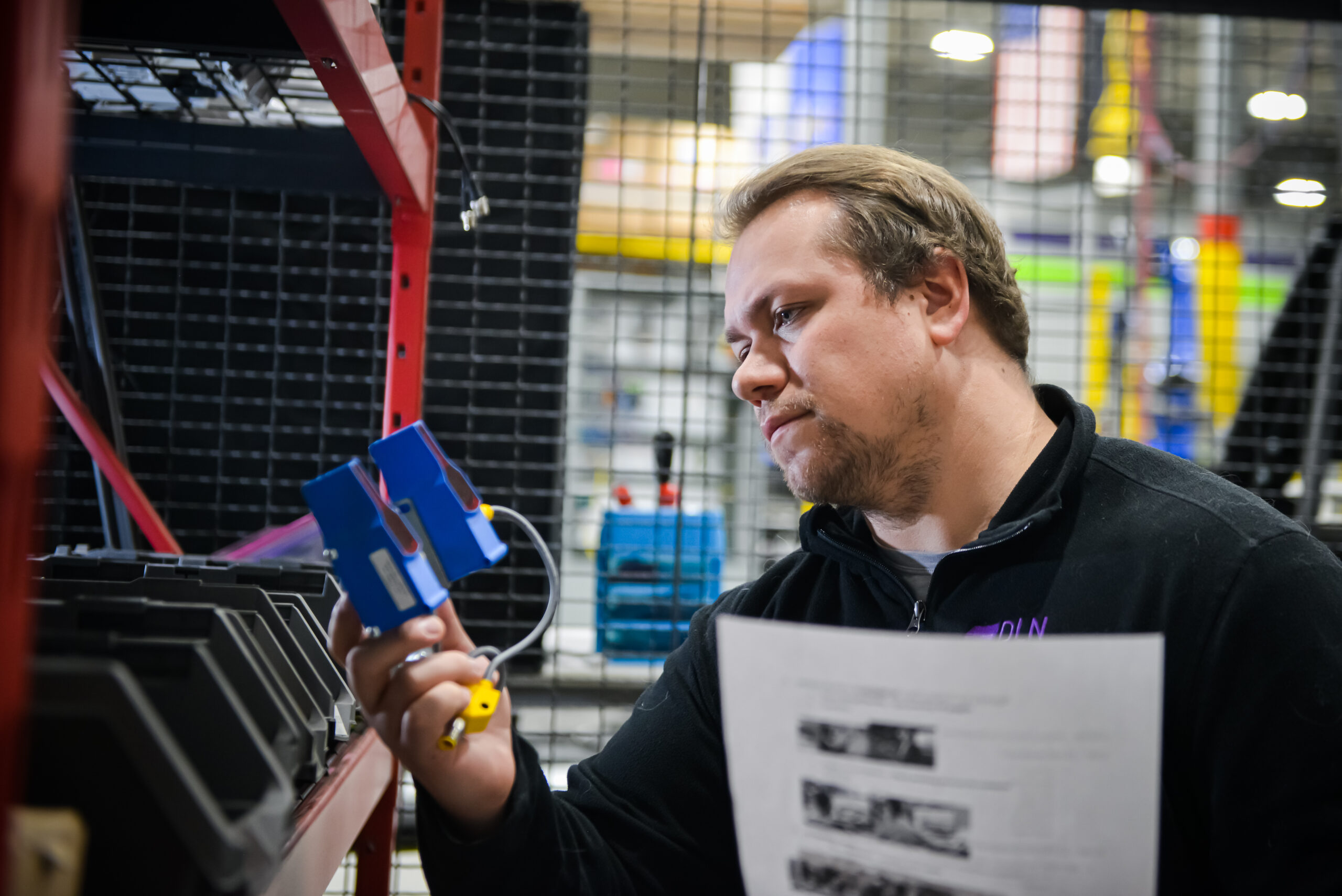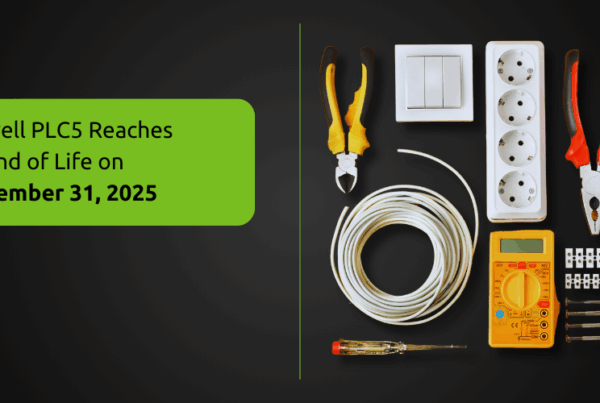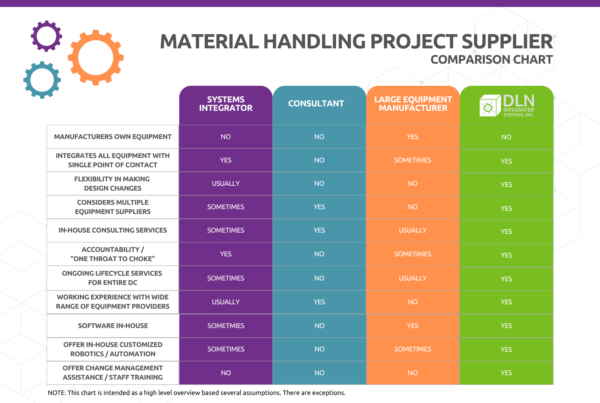Part 5 of 5
The previous four installments of our five-part blog series A Roadmap to Successful Transformation – can be found here:
Part 2 – Detailed Design & Program Planning (Pre-Implementation)
In our series thus far, DLN and Connors Group outlined best practices for implementing a large-scale distribution system.
With the system successfully up and running, many companies have a tendency to turn their focus and budgeting to operational excellence, assuming that their system will effortlessly bear fruit for decades to come.
While it is absolutely true that a new distribution system can remain a powerful asset for decades, maintaining performance over time requires diligent effort and investment.
The fifth and final phase is the ongoing maintenance and upgrades that must be made over the lifecycle of the system in order to maintain optimized performance.
System maintenance can be broken down into four primary categories:
1. Preventative Maintenance
A strong preventative maintenance (PM) program is the first line of defense to ensure optimal performance and minimize downtime.
Ensure that PM inspections are performed according to the manufacturer’s schedule, and don’t stop at mechanical equipment – it’s also critical to monitor the electrical components, such as sensors and control panels.
Clean the system regularly to keep things running smoothly. Also consider installing a predictive condition monitoring system to detect issues before they cause downtime.
Pro Tip:
 Keep Records
Keep Records
Plan to keep detailed records of inspections, repairs, and parts replaced. Communicate the importance to the entire team.
2. Reactive Maintenance
While the ideal scenario is that all breakdowns are prevented by a good PM program, the reality is that surprise breakdowns are bound to occur.
In these situations, minimizing the time to repair is the name of the game. A quick repair relies on a number of key components coming together, including maintenance labor with the necessary skills and knowledge and the parts and materials to get the system back online.
Effective reactive maintenance begins with a well-trained, skilled team, supported by a balanced training program that combines classroom-based theoretical education with hands-on, field-specific experience.
Equally important is maintaining thorough, up-to-date documentation—system manuals, repair guides, and spare parts references—which must be well-organized and easily searchable to ensure technicians can quickly access the information they need.
However, even expert technicians and perfect documentation are of little use without the right parts on hand.
Pro Tip:
 Use Tech to Manage Parts Inventory
Use Tech to Manage Parts Inventory
A well-managed spare parts inventory, supported by tools like a computerized maintenance management system (CMMS), ensures parts are systematically stored, clearly labeled, and readily accessible.
3. End-Of-Life
Even when systems are perfectly maintained, eventually system components will begin the end-of-life (EOL) phase where replacement parts are no longer produced and/or supported by the OEM.
Effectively managing EOL requires a proactive and strategic approach to minimize operational disruptions and optimize upgrades.
Begin by establishing clear EOL criteria based on factors such as equipment age, performance degradation, maintenance costs, and availability of replacement parts. Regularly assess assets to identify those approaching obsolescence and develop phased replacement or upgrade plans.
Maintain open communication with equipment manufacturers to stay informed about product support timelines, potential retrofit options, successor models and compatibility with connected products in the system.
Pro Tip:
 Budget for EOL in Advance
Budget for EOL in Advance
Integrate EOL considerations into your capital planning and budgeting processes to avoid unplanned expenditures and smooth your investment.
4. Changing Business Requirements
Even with top-notch maintenance, it is not uncommon for systems to experience performance issues over time as the requirements of the business deviate from what the system was designed to support.
Most growing businesses will experience throughput challenges as sales increase beyond the design horizon of the system. But challenges can also surface if the proportion of various business channels shift within an operation that is otherwise stable.
A common example is businesses that experience a shift from retail to direct-to-consumer buying patterns. Shipping via smaller, DTC orders creates significantly more outbound cartons than the same number of units sold via retail, which can exceed the capabilities of outbound conveyance even though overall sales units remains the same.
Pro Tip:
Plan Periodic Reviews

To maintain distribution performance over time, periodically revisit the parameters that drove the original design, especially throughput from various processes and the underlying business trends that dictate requirements.
In most cases, relatively small changes can be made to the system to mitigate the impacts of changing business requirements.
If capacities are unknown, a system audit can be performed to quantify capacities as well as inefficiencies in system performance. From there, an action plan can be developed to expand capacity and improve performance in bottleneck areas to adapt to current requirements.
Final Thoughts
Even with top-notch maintenance and strategic end-of-life planning, distribution systems must also adapt to shifting business needs.
Whether driven by growth, evolving customer expectations, or changes in technology, the ability to flex and scale your system is critical to long-term success.
By committing to a lifecycle approach—one that balances preventative and reactive maintenance, anticipates obsolescence, and embraces change—companies can ensure their systems continue to deliver value well into the future. Transformation doesn’t end with go-live; it’s an ongoing journey requiring vigilance, foresight, and investment.
About the Authors

Luke Nuber
DLN Integrated Systems

Andy Hunter
Connors Group




